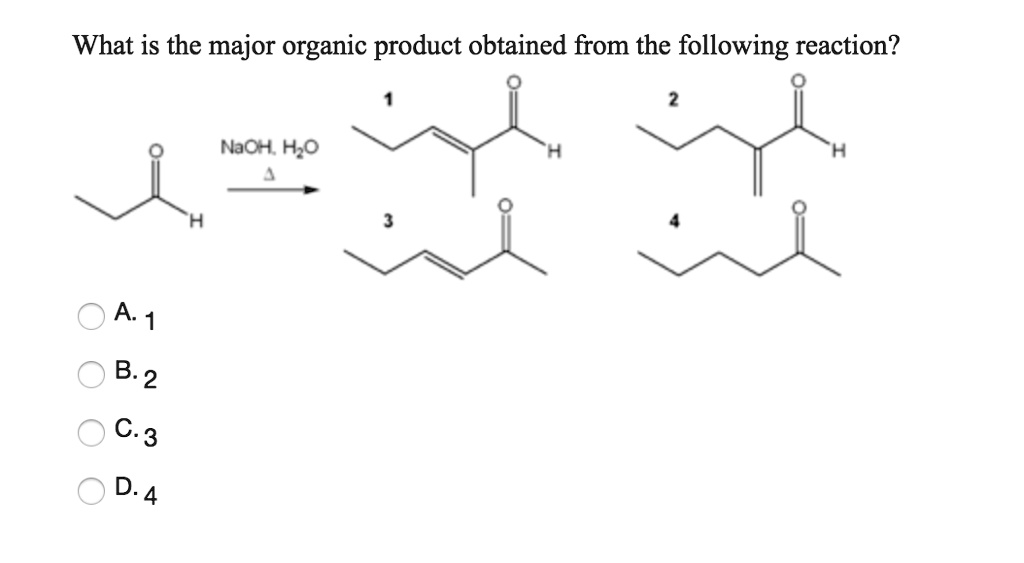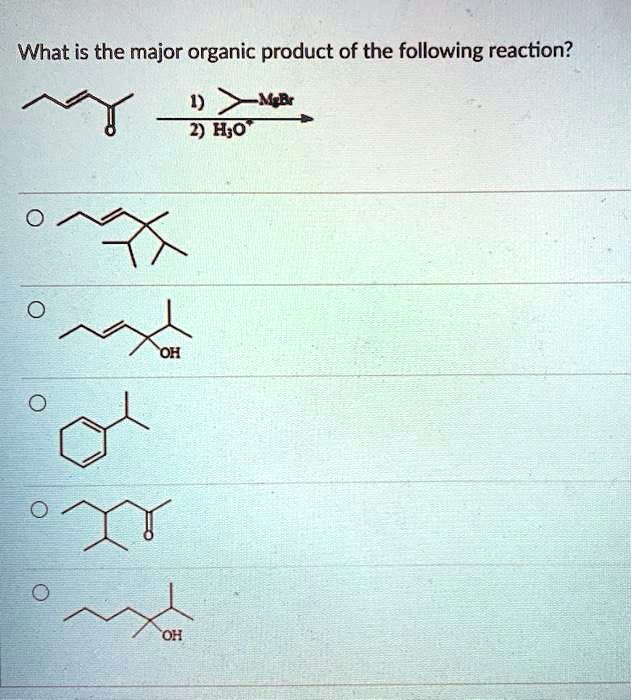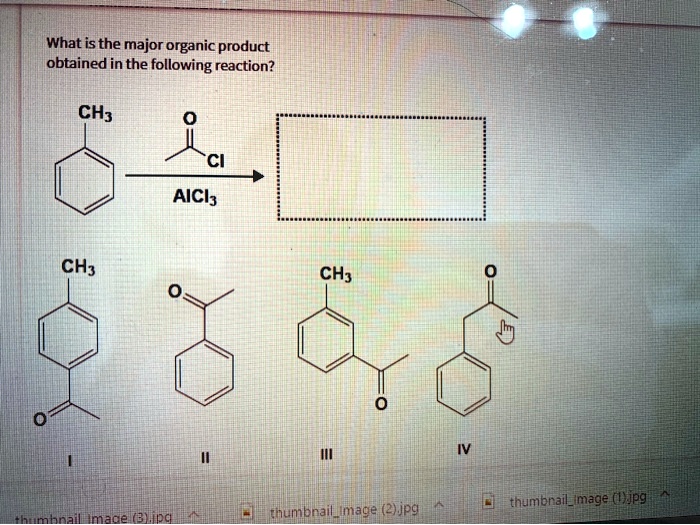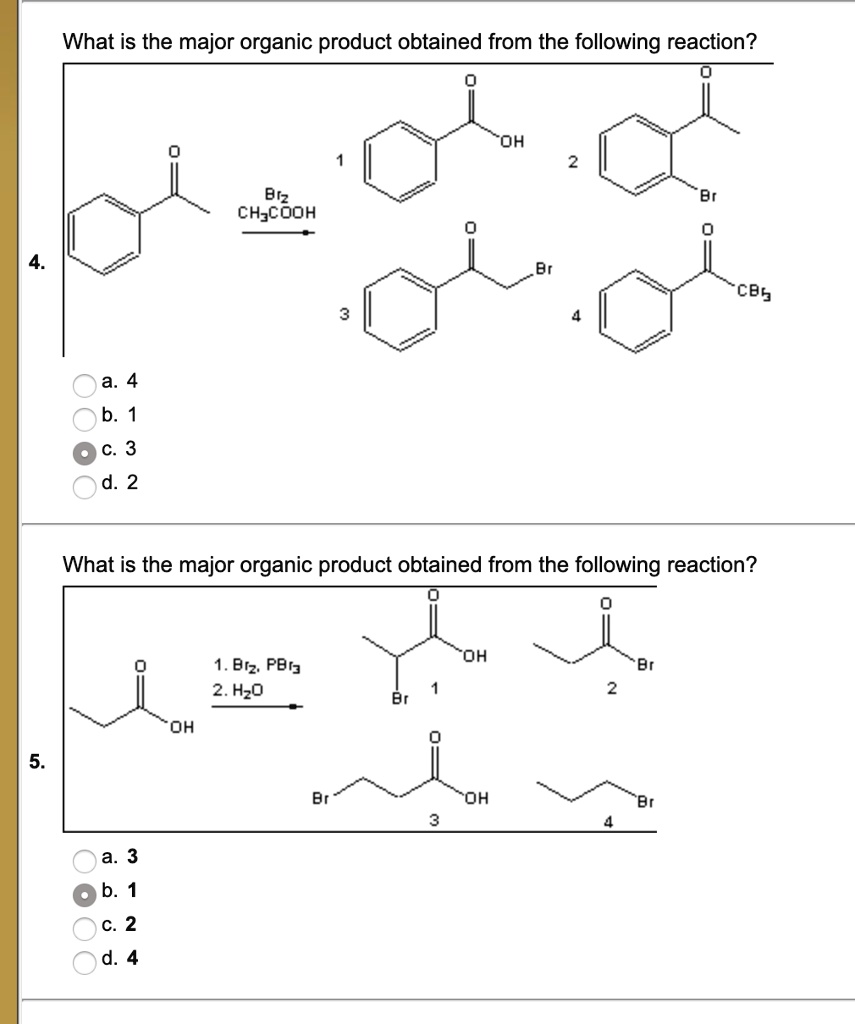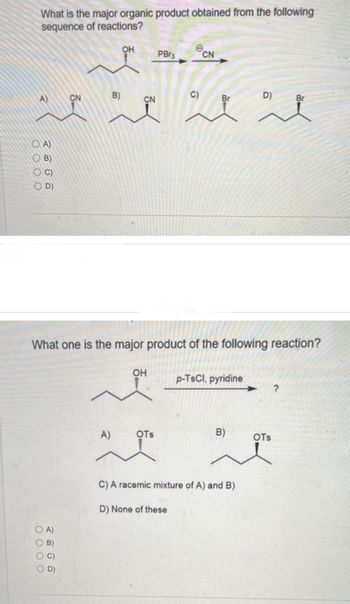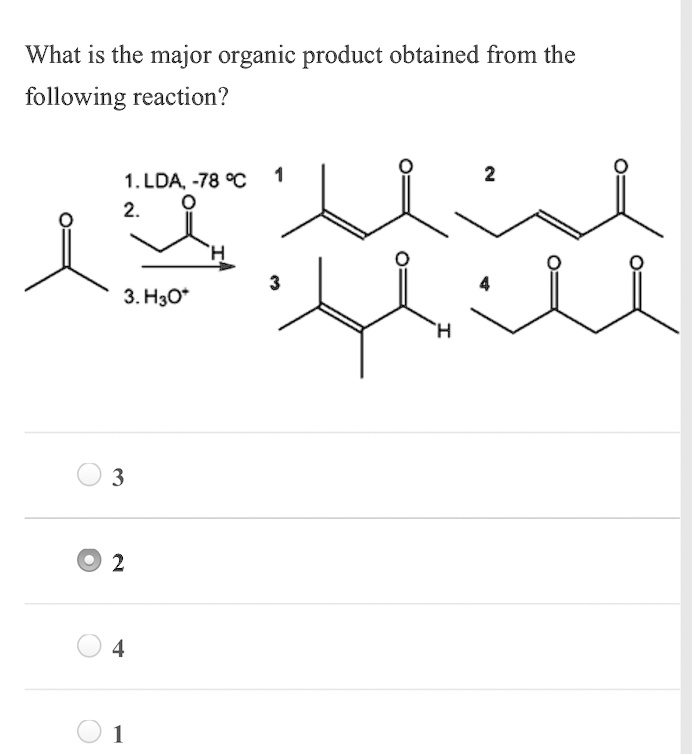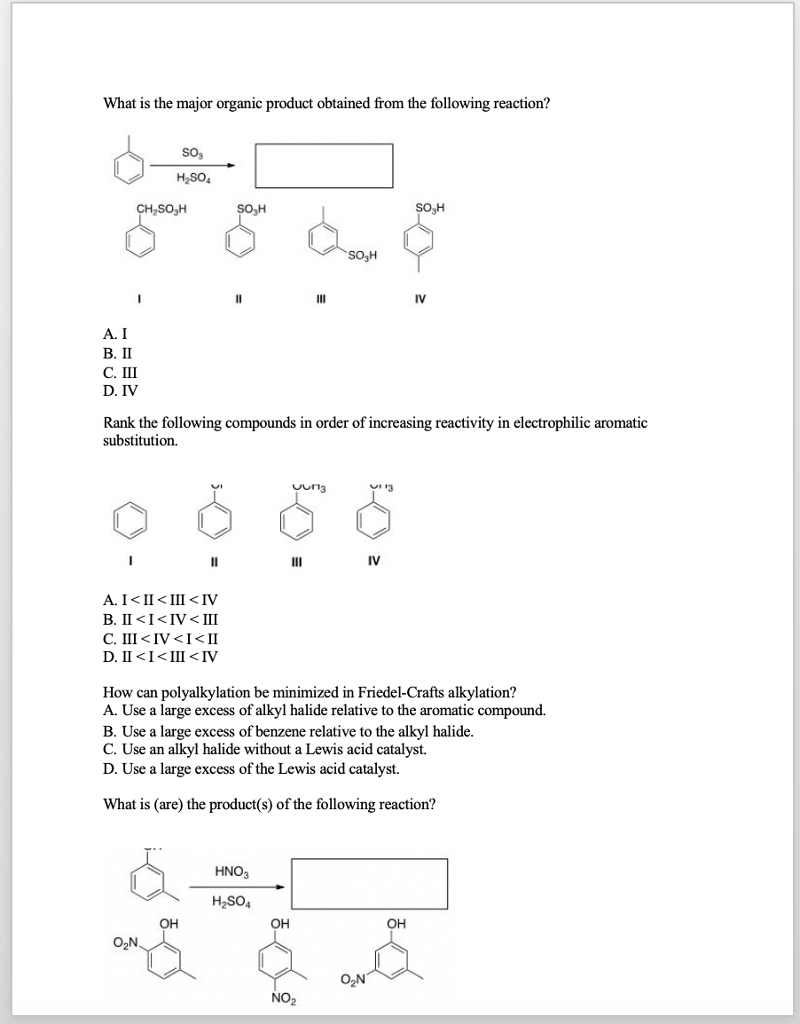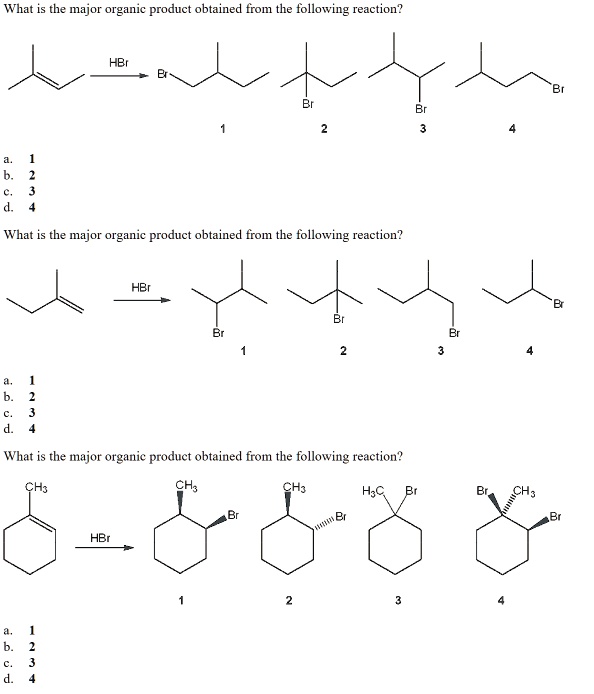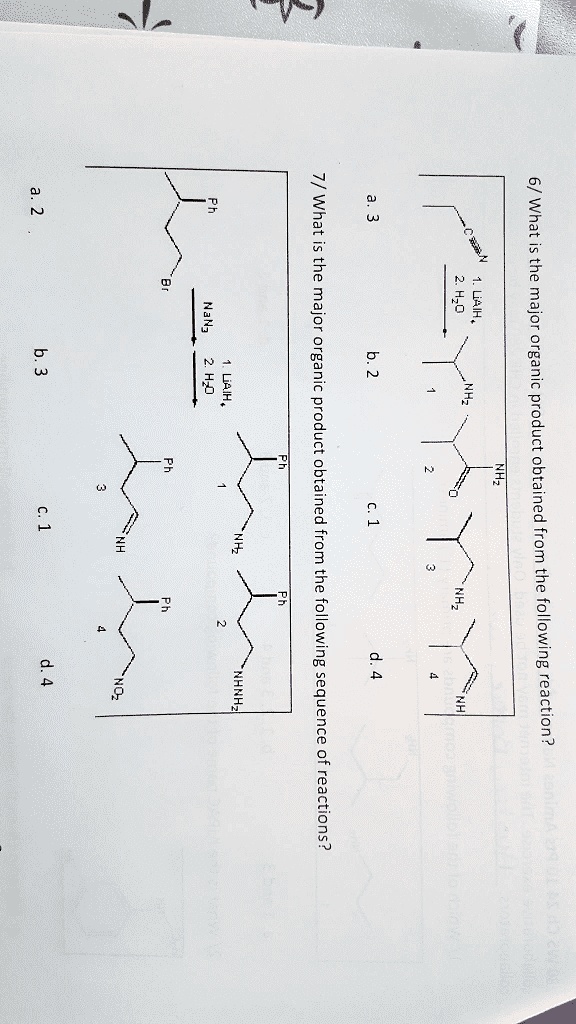What Is The Major Organic Product For The Following Reaction
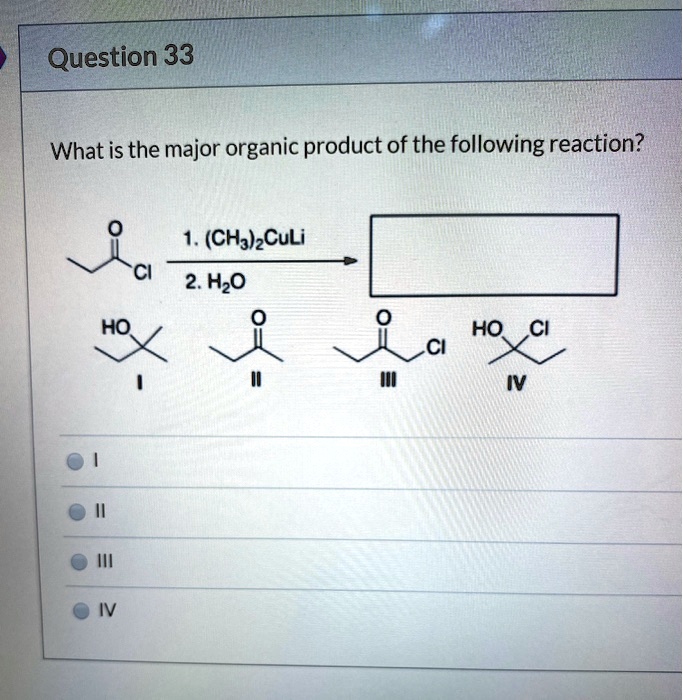
Imagine a lab, late at night. Beakers bubble gently on hotplates, the air thick with the scent of solvents and the quiet hum of a magnetic stirrer. A lone chemist, illuminated by the soft glow of a monitor displaying complex molecular structures, meticulously adds a reagent to a flask. The question hangs in the air, palpable as the vapor: what single organic compound will emerge victorious from this carefully orchestrated molecular dance?
The heart of this chemical drama lies in identifying the major organic product of a given reaction. This isn't just about naming a molecule; it's about understanding the intricate rules governing chemical reactivity, predicting which reaction pathway will be most favorable, and ultimately, shaping the world around us at a molecular level. Understanding this is crucial in fields from drug discovery to materials science.
Understanding Organic Reactions: A Foundation
Organic chemistry, at its core, is the study of carbon-containing compounds. These compounds form the building blocks of life and underpin countless industrial processes. Organic reactions are the processes through which these molecules are transformed, broken down, or built up into new structures.
Predicting the product of an organic reaction requires a solid understanding of several key principles. This includes the nature of the reactants, the specific reagents used, and the reaction conditions (temperature, solvent, etc.). These factors all play a critical role in determining the outcome.
Reaction mechanisms provide a step-by-step description of how a reaction proceeds. They detail the movement of electrons, the formation and breaking of bonds, and the formation of any intermediate species. By understanding the mechanism, we can predict the most likely product with greater accuracy.
Key Factors Influencing Product Formation
Several factors dictate which product will be the major product in a chemical reaction. Steric hindrance, for example, describes the spatial bulk of molecules, which can block or slow down reactions. Bulky groups near a reactive site can prevent certain reactions from occurring, favoring a less hindered pathway.
Electronic effects also exert a strong influence. Electron-donating groups can stabilize positive charges, while electron-withdrawing groups stabilize negative charges. This stabilization can dramatically alter the reaction pathway and the final product distribution.
Thermodynamics and kinetics play a crucial role as well. The thermodynamically favored product is the most stable product, meaning it has the lowest energy. The kinetically favored product, on the other hand, is formed fastest, even if it is not the most stable.
Identifying the Major Product: A Step-by-Step Approach
The approach to predicting the major product involves several carefully considered steps. Begin by identifying the functional groups present in the reactants. These are specific groupings of atoms within a molecule that determine its characteristic chemical reactions.
Next, determine the type of reaction occurring. Is it an addition, elimination, substitution, or rearrangement? Knowing the reaction type narrows down the possibilities.
Consider the stability of any potential intermediates formed during the reaction. Carbocations, carbanions, and radicals are common intermediates, and their stability can be influenced by factors like hyperconjugation and resonance. The most stable intermediate will generally lead to the major product.
Finally, analyze the reaction conditions. Temperature, solvent polarity, and the presence of catalysts can all affect the outcome. For instance, high temperatures can favor elimination reactions, while polar solvents can stabilize charged intermediates.
Examples and Applications
Consider the addition of HBr to an unsymmetrical alkene. According to Markovnikov's rule, the hydrogen atom will add to the carbon with more hydrogen atoms already attached, and the bromine atom will add to the carbon with fewer hydrogen atoms.
In the case of an SN1 reaction, the formation of a carbocation intermediate is the rate-determining step. Therefore, the stability of the carbocation will determine the major product. Tertiary carbocations are generally more stable than secondary or primary carbocations.
These principles are not confined to textbooks and laboratories. They are employed daily in the synthesis of pharmaceuticals, the development of new materials, and the optimization of industrial processes. For example, in drug discovery, medicinal chemists rely on their understanding of organic reactions to design and synthesize molecules with specific biological activities.
The Importance of Understanding Reaction Mechanisms
Predicting the major product of an organic reaction isn't just about memorizing rules; it's about understanding the underlying reaction mechanism. Grasping the mechanism allows for rationalizing why a particular product is favored and for predicting the outcome of related reactions.
Understanding reaction mechanisms provides a powerful tool for problem-solving in organic chemistry. It empowers chemists to design synthetic routes, optimize reaction conditions, and ultimately, create new and useful molecules.
By carefully analyzing the reactants, reagents, reaction conditions, and potential intermediates, and understanding the governing principles of organic chemistry, it is possible to predict the major organic product of a given reaction with confidence.
Looking Ahead: The Future of Organic Synthesis
The field of organic synthesis is constantly evolving. New reactions, catalysts, and methodologies are being developed at an accelerated pace, pushing the boundaries of what is possible.
Computational chemistry is playing an increasingly important role in predicting reaction outcomes and optimizing reaction conditions. Computer simulations can now accurately model complex chemical reactions, providing valuable insights to experimental chemists.
As we continue to unravel the mysteries of molecular reactivity, we can expect even greater advances in the synthesis of complex molecules and the development of new technologies based on organic chemistry. This journey of discovery continues, driven by the desire to understand and control the fundamental building blocks of our world.
So, the next time you encounter a seemingly complex organic reaction, remember the principles we've discussed. Break it down, analyze the players, and understand the mechanism. You might just find yourself predicting the major organic product with surprising accuracy, and experiencing the profound satisfaction of understanding the molecular dance of life.


